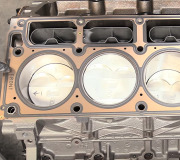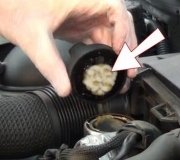There's one common cause of a temperature gauge fluctuating up and down, then steadying out after a little while. The heat being put into the coolant is some distance away from the thermostat and the sending unit for the gauge. It takes some time for that heat to migrate over to the thermostat. As it does, the gauge reading will go up, then, when the heat finally reaches the thermostat and it opens, cool coolant from the radiator flows into the engine and reaches the sending unit so the gauge reading goes down. Eventually the thermostat closes in response to that cold coolant and the process starts all over.
The cure for that is to put a tiny bleed hole in the plate of the thermostat. That allows enough coolant to sneak past the thermostat so the heat reaches it sooner and causes it to open. There was an aftermarket replacement thermostat in my '88 Grand Caravan that did not have that bleed hole. The gauge read properly for years before it suddenly started doing what you're describing. Every day it would go to too hot, then back down a half dozen times within about the first seven miles, then it would be normal for the rest of the trip. After putting up with that for a few years, the fix was to drill a 1/32" hole in the plate. That van is still my daily driver and I haven't had an overheating problem even when pulling a huge trailer that's bigger than the van.
The water pump won't cause no heat by itself but if it was leaking the low coolant would have prevented it from circulating through the heater core in the dash. Look for something to remove near the thermostat that will allow any trapped air to escape, then fill the system. Some GM radiators sit lower than parts of the engine so you may need to keep the radiator cap on tight and fill from the reservoir. With the radiator down low, air is not going to be expelled into the reservoir when the engine warms up. It will expand and push liquid into the reservoir. The air will have to be removed at the thermostat housing.
Tuesday, May 15th, 2012 AT 3:03 AM




